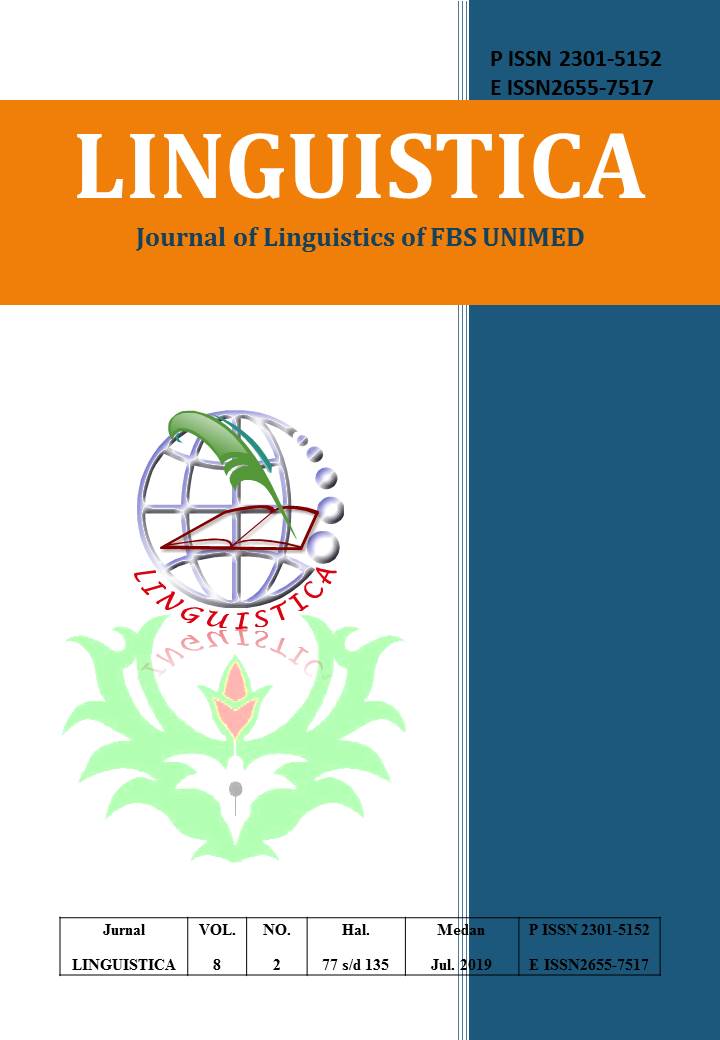FORMATION IN PANTUN OF LANGKAT MALAY TRADITIONAL WEDDING CEREMONY
DOI:
https://doi.org/10.24114/jalu.v8i2.13863Abstract
The purpose of this study was to conduct the formation in Pantun of Langkat Malay traditional wedding ceremony by using Sibarani™s theory. Formation itself is text, co-text, and context which aimed to know the purpose of an oral tradition. The method used in this paper was descriptive and qualitative. For collecting the data the researcher became an instrument by doing observation and unstructured interview. Analysis technique used which were transcribing, reading, comprehending, investigating, describing, and explaining. The findings of text showed theme in Pantun that uttered by telangkai contained gratitude, honor, tradition, persuasion, joke, hoping a kindness, signifying a peace, welcoming guest, enthusiastic, teasing which briefly supported by co-text and context. Co-text described paralinguistic, kinetic, proxemic, and material elements. Some context applied as follow; cultural context, social context, context of situation, and cultural context.Keywords: Text, Co-text, Context, Pantun, Langkat Malay Traditional Wedding CeremonyDownloads
Published
2019-07-04
Issue
Section
Articles
License
Copyright (c) 2019 Dina Finanti, Muhammad Natsir, Rahmad Husein

This work is licensed under a Creative Commons Attribution-ShareAlike 4.0 International License.
Authors who publish with this journal agree to the following terms:
- Authors retain copyright and grant the journal the right of first publication with the work simultaneously licensed under a Creative Commons Attribution License that allows others to share the work with an acknowledgment of the work's authorship and initial publication in this journal.
- Authors are able to enter into separate, additional contractual arrangements for the non-exclusive distribution of the journal's published version of the work (e.g., post it to an institutional repository or publish it in a book), with an acknowledgment of its initial publication in this journal.
- Authors are permitted and encouraged to post their work online (e.g., in institutional repositories or on their website) prior to and during the submission process, as it can lead to productive exchanges, as well as earlier and greater citation of published work (See The Effect of Open Access).
- This work is licensed under a Creative Commons Attribution-ShareAlike 4.0 International License.

